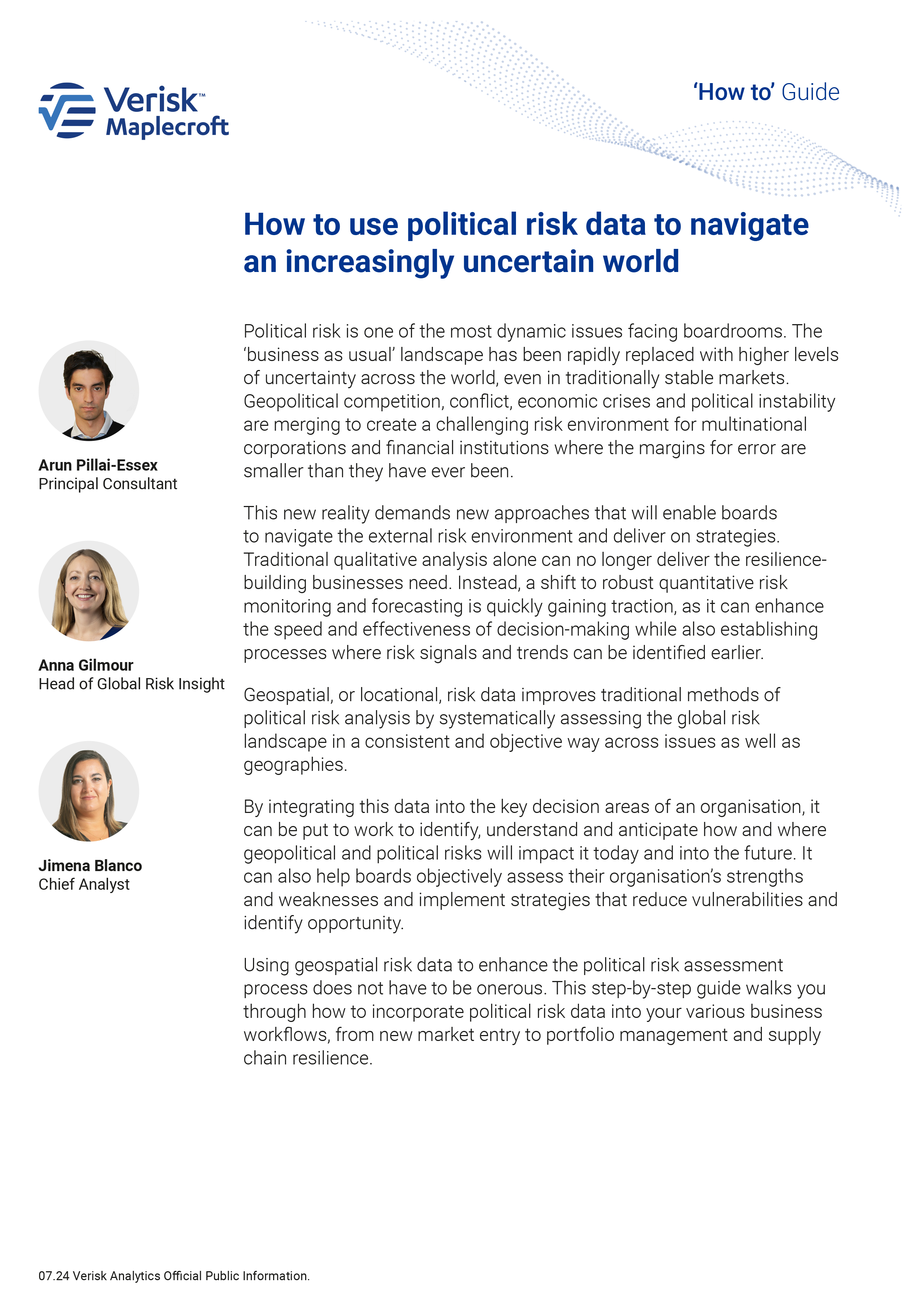Using political risk data to navigate an increasingly uncertain world
Political risk is one of the most dynamic issues facing boardrooms. The ‘business as usual’ landscape has been rapidly replaced with higher levels of uncertainty across the world, even in traditionally stable markets. Geopolitical competition, conflict, economic crises and political instability are merging to create a challenging risk environment for multinational corporations and financial institutions where the margins for error are smaller than ever.
This new reality demands new approaches that will enable boards to navigate the external risk environment and deliver on strategies. Traditional qualitative analysis alone can no longer deliver the resilience-building businesses need. Instead, a shift to robust quantitative risk monitoring and forecasting is quickly gaining traction, as it can enhance the speed and effectiveness of decision-making while also establishing processes where risk signals and trends can be identified earlier.
Geospatial, or locational, risk data improves traditional methods of political risk analysis by systematically assessing the global risk landscape in a consistent and objective way across issues and geographies alike.
Using geospatial risk data to enhance the political risk assessment process does not have to be onerous. This step-by-step guide walks you through how to incorporate political risk data into your various business workflows, from new market entry to portfolio management and supply chain resilience.
How to use political risk data to navigate an increasingly uncertain world
Please complete the form to download the guide.

Related content
Data & Capabilities
Political Risk Dataset
Our comprehensive Political Risk Dataset captures the full range of structural and dynamic political risks
Geopolitical & country risk
Forward looking, strategic insight on key markets and global issues